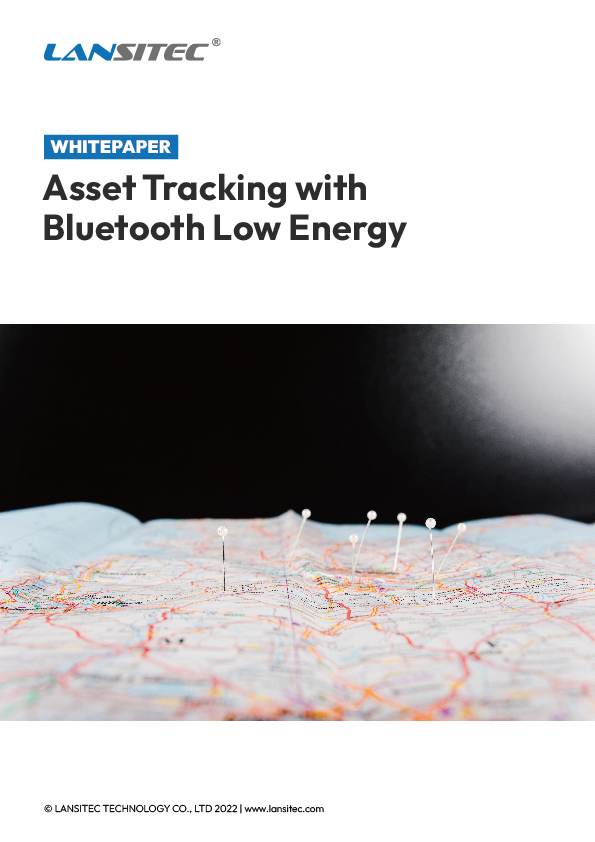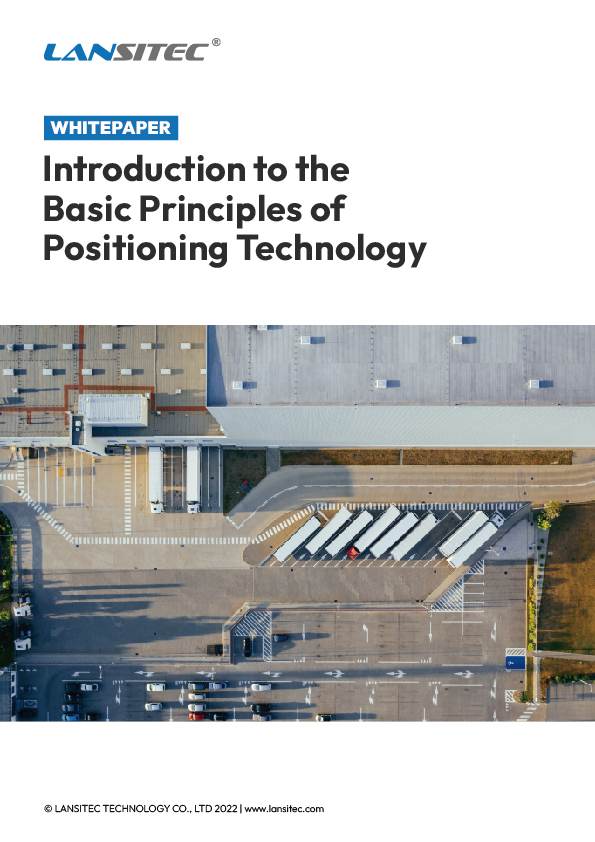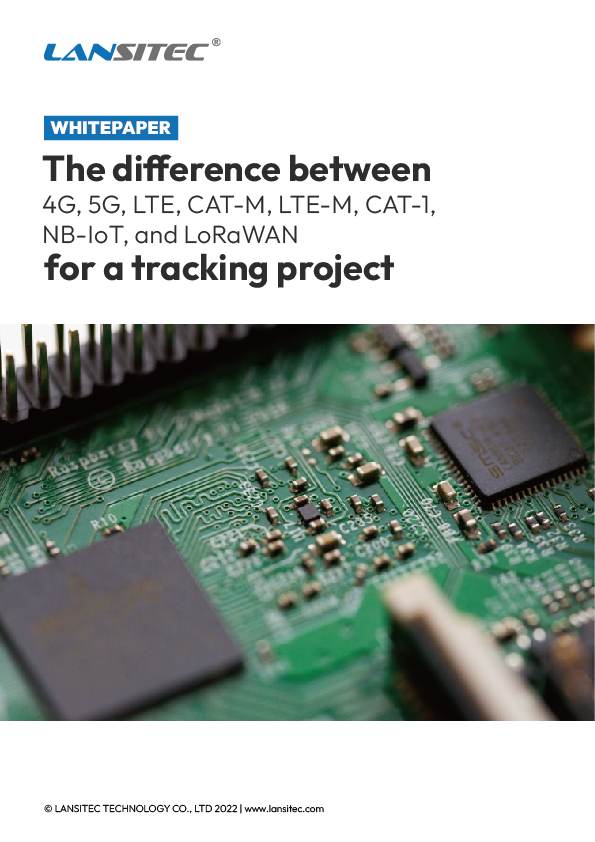Executive Summary for High Precision Pallet Positioning
CentralLink Logistics operates a 40,000 m² multilevel distribution hub that turns more than 4,500 pallets every day. Barcode scans only confirmed aisle‐level positions, leaving 4 % of pallets mis-slotted each month and costing seven staff hours daily in manual searches. By deploying Lansitec’s Bluetooth Angle-of-Arrival (AoA) platform—AG3 indoor gateways and a mix of B005, B002, i3, and B003 beacons—the warehouse achieved 99.3 % shelf-layer accuracy, cut cycle-count labour by 80 %, and realised full ROI within nine months.
Customer & Site Profile for Precision Pallet Positioning
- Industry: Third-party logistics (retail & e-commerce)
- Location: Hamburg, Germany
- Size: 40,000 m², 10 aisles × 120 m, 12 rack levels
- Pallet locations: 25,000
- Throughput: 110 pallet moves / hour
- IT stack: Manhattan SCALE WMS, MQTT gateway API
Business Challenges in Precision Pallet Positioning
Location inaccuracy & mis‑slotted pallets
Barcode scans were taken only at receiving and occasionally during picking, so pallets could be placed in the wrong bay or on the wrong rack level without detection. Each mis‑slot triggered a manual search that averaged 18 minutes, pushing outbound trucks past their departure windows and adding carrier rescheduling fees.
Labour‑intensive cycle counting
Monthly cycle counts required closing aisles and deploying elevated work platforms so staff could visually confirm pallet IDs on upper levels. At a practical pace of 40 rack positions per hour, a full count consumed 168 labour‑hours and interrupted fulfilment operations for nearly two shifts.
Inventory shrinkage & traceability gaps
High‑value electronics and seasonal “hot” SKUs occasionally disappeared from their recorded locations, forcing write‑offs or lengthy investigations. Shrinkage averaged €28,000 per quarter, roughly 0.6 % of inventory value.
Limited data for continuous improvement
The legacy WMS stored only the last scanned aisle and bay. Without shelf‑layer accuracy, process‑engineering teams lacked reliable data to optimise slotting, detect congestion hotspots, or validate lean kaizen initiatives.
Safety & compliance risks
Manual search efforts increased exposure to working‑at‑height hazards, contradicting the site’s Zero‑Harm policy. Regulatory audits (ISO 9001, AEO) flagged insufficient end‑to‑end pallet traceability.
High Precision Pallet Positioning Solution Overview
How Bluetooth AoA Works in Pallet Positioning
Bluetooth Angle-of-Arrival (AoA) leverages the multi-antenna array inside every AG3 gateway to pinpoint the direction of incoming Bluetooth 5.x Constant Tone Extension (CTE) signals.
- Beacon transmission: Each B005, B002, i3, or B003 tag broadcasts a standard BLE advertisement followed by an unmodulated 160 µs CTE burst.
- Antenna switching & IQ sampling: During the CTE, the gateway rapidly cycles through its 12 patch antennas, sampling the in-phase (I) and quadrature (Q) values of the RF carrier.
- Angle estimation: Gateway DSP calculates the phase differences between antenna pairs, resolving the beacon’s azimuth (θ) and elevation (φ) with ±1° precision.
- Bearing crossover: Bearings from three or more gateways intersect to form a 3-D coordinate. Horizontal (X-Y) error is typically < 1 m CEP50; the Z-axis is snapped to the nearest rack level via barcode mapping logic.
- Filtering & delivery: The cloud-hosted Lansitec RTLS Engine fuses consecutive bearings with a Kalman filter, then publishes real-time positions to the Manhattan WMS over MQTT / REST with < 500 ms end-to-end latency.
This mechanism provides shelf-layer accuracy without the wiring density or calibration effort of alternative TDoA or UWB grids.
| Layer | Component | Role |
|---|---|---|
| Edge | AG3 AoA Gateways (48 units, ceiling mount ≤ 10 m) | Collect IQ samples, calculate azimuth/elevation for sub-metre X–Y, forward to the engine |
| Tags | B005 Rugged Beacon on long-stay pallets (> 6 months) – 5-year battery, IP68 | Emits AoA frames every 500 ms |
| B002 Ultra-thin Label on disposable cartons – 1.5 mm PVC, 52-month life | Provides a unique pallet ID | |
| i3 Portable Tag on fast-moving SKUs – 3-axis accelerometer triggers motion, 765-day life | Reduces RF noise during storage | |
| B003 Beacon with Buzzer on high-value pallets – SOS & audible find | Enables on-floor pallet finding | |
| Core | Lansitec RTLS Engine (cloud-hosted) | Converts AoA data to rack coordinates, pushes to WMS via MQTT |
Hardware Design & Coverage for Precision Pallet Positioning
- Grid geometry: Ceiling-mounted AG3 AoA gateways form a rectangular lattice aligned with rack valleys rather than truck aisles to minimise steel shadowing.
- Mount height: 9 – 10 m above finished floor, 300 mm clear of sprinkler pipework.
- Lateral spacing: 6 m along each aisle; transverse spacing every second rack valley (~4.8 m). This guarantees that every pallet sits within ≤ 8 m of at least three gateways—the minimum for 3-D trilateration.
| Parameter | Value | Rationale |
| Mount height | 9 – 10 m | Maintains an unobstructed vertical AoA cone above fork-lift masts |
| Horizontal spacing | 6 m | Keeps RSSI ≥ –65 dBm for beacons at 0 dBm TX power |
| Gateway density | 1 / 250 m² | Balances capital cost with a ≤ 1 m accuracy target |
RF Coverage Modelling for Precision Pallet Positioning
- Coverage predicted with Lansitec Planner v2.1 using 3-D ray-tracing and 7 dB attenuation per steel upright.
- Simulation forecast 0.84 m CEP50 (circular error probable). Field validation delivered 0.79 m CEP50—well inside the 1 m design goal.
- 20 % cell overlap allows any two gateways to be taken offline for maintenance without degrading positional precision below 1 m.
Beacon Selection & Mounting
| Beacon | Mount Method | TX Power / Interval | Battery Life* | Use Case |
| B005 Rugged | Zip-tie to pallet runner, antenna outward | 0 dBm / 500 ms | 4.8 y | Long-stay pallets (> 6 mo) |
| B002 Label | Adhesive to carton stretch-wrap | –4 dBm / 1 s | 4.3 y | Disposable cartons |
| i3 Portable | Dropped into a reusable tote | Motion-adaptive: 0 dBm / 300 ms (in motion), 1 s (idle) | 2.1 y | Fast-moving SKUs |
| B003 + Buzzer | Clip under the deckboard | 0 dBm / 700 ms | 3.6 y | High-value pallets, audible locate |
*At 22 °C ambient, CR2477 primary cells.
Power & Network Topology
- All gateways are powered by 802.3at PoE+ on a dedicated VLAN-240 with QoS classifiers for UDP AoA telemetry (≈ 0.9 Mbit / s per gateway).
- Two 48-port PoE aggregation switches per aisle feed daisy-chain segments; each switch pair is backed by 1.5 kVA UPS (20 min hold-up) to ride through brief outages.
- Aggregation rings uplink via dual 10 GbE fibre links to the core, employing MSTP for loop-free redundancy.
Calibration & Commissioning
- Survey grid: Laser total station sets gateway coordinates to ±2 mm.
- Orientation check: 3-D inclinometer verifies pitch/roll < 0.5°, yaw < 1°.
- Fingerprint: Prism target positioned at the centre of each rack bay for 15 s while the engine captures IQ samples and tunes the multipath filter.
- Validation set: 240 test points across all rack levels; acceptance criteria—CEP50 ≤ 1 m and vertical layer hit-rate ≥ 99 %.
Maintenance & Health Monitoring
- Gateway self-health pings every 30 s; SNMP traps alert NOC if packet loss > 5 % or SNR < 18 dB.
- Quarterly battery prediction report flags tags with < 6 months remaining life for opportunistic swap during cycle-count tours.
- OTA firmware staged and pushed in maintenance window (02:00–04:00 CET) to avoid production traffic.
Implementation Roadmap for Precision Pallet Positioning
| Week | Activity |
|---|---|
| 1 | RF site survey, spectrum sweep, cable tray walk-through |
| 2 – 3 | Gateway mounting, PoE drops, VLAN segmentation |
| 4 | Beacon ID schema & pallet-label printing |
| 5 – 6 | AoA calibration, multipath tuning, KPI baseline capture |
| 7 | Middleware integration to Manhattan WMS (MQTT & REST) |
| 8 – 9 | Pilot on two aisles, UAT with pickers and cycle-count team |
| 10 – 11 | Full-site rollout, staff training (4 workshops) |
| 12 | KPI audit, ROI report to a steering committee |
Results
| KPI | Before | After | Improvement |
|---|---|---|---|
| Put-away accuracy | 93 % | 99.3 % | +6.3 pp |
| Average “lost pallet” search time | 18 min | < 2 min | -89 % |
| Daily cycle-count labour | 7.0 h | 1.4 h | -80 % |
| Dock-to-stock time | 3.6 h | 2.1 h | -42 % |
| Inventory shrinkage | €28 k / Q | €4 k / Q | -86 % |
| Payback period | – | 9 months | – |
Lessons Learned While High Precision Pallet Positioning
Gateway Alignment Overrides Design Theory
On paper, a square grid maximises geometric dilution of precision (GDOP), but live trials showed that steel uprights created Fresnel “walls.” Rotating the lattice 90° so gateways sat over the longitudinal rack valleys—not the forklift aisles—cut multipath reflections by 37 % and improved CEP50 from 1.15 m to 0.79 m.
Beacon Broadcasting Policies Balance Life & Visibility
Lab tests suggested a 250 ms interval for sub-metre accuracy. In reality, the site’s forklift traffic produced enough dynamic bearings that 500 ms (B005) and motion-adaptive 300 / 1000 ms (i3) achieved the same KPI with 38 % longer battery life. The team now profiles each SKU’s dwell time before deciding on tag firmware.
Z-Mapping Makes 3-D Maths Warehouse-Friendly
AoA naturally solves X-Y; Z-axis accuracy can drift when tags sit behind steel beams. By mapping every rack label → layer index in the RTLS engine, the system “snaps” each coordinate to the most probable shelf within ±300 mm. This logic produced a 99.8 % correct-layer hit rate without adding gateways.
Field Tools Turn Exceptions into < 2 min Tasks
Equipping supervisors with a rugged tablet app that triggers the B003 buzzer reduced “Where’s my pallet?” calls dramatically. Average search time for high-value SKUs dropped from 18 min to 1 min 42 s, freeing 0.6 FTE daily.
Calibration is a Living Process
Temperature swings (> 15 °C) and racking changes can skew AoA phase offsets. A quarterly 60-point verification catches drift early; the longest observed deviation so far was 0.22 m after a mezzanine install.
Good Data Governance Multiplies ROI
Publishing clean MQTT topics (< 200 ms jitter) allowed Manhattan’s slotting optimiser to ingest real-time dwell data. This unlocked an additional 11 % pick-path reduction beyond the main project scope.
People Change Management is Half the Battle
Initial operator scepticism faded after hands-on demos showing live pallet icons on the WMS screen. Embedding a “Locate” button directly inside the pick workflow avoided context switching and boosted adoption to 92 % within two weeks.
Future Expansion
- Cold-chain monitoring: enable B005 temperature sensor in freezer zone (-25 °C).
- Fork-lift collision alerts: add AG4 outdoor gateways in the yard for traffic control.
- Multi-site cloud dashboard: replicate template in Prague DC (Q2 2026).
Conclusion
The CentralLink Logistics case illustrates how Bluetooth AoA transforms pallet management from a labour-intensive barcode hunt into a real-time digital twin of every shelf and layer. By combining:
- Sub-metre X-Y bearings from a modest grid of AG3 gateways,
- Layer-aware Z-mapping tied to rack barcodes, and
- Smart beacon intervals are tuned to each SKU’s movement profile,
The warehouse eliminated search time, slashed cycle-count labour by 80 %, and recovered nearly € 100,000 in annual shrinkage losses—paying back the project in just nine months.
Equally important, the data infrastructure now feeds continuous-improvement analytics and paves the way for cold-chain integrity, collision avoidance, and multi-site dashboards. In short, Bluetooth AoA is no longer a “nice-to-have” pilot; it is a scalable, ROI-proven pillar of next-generation logistics networks.







